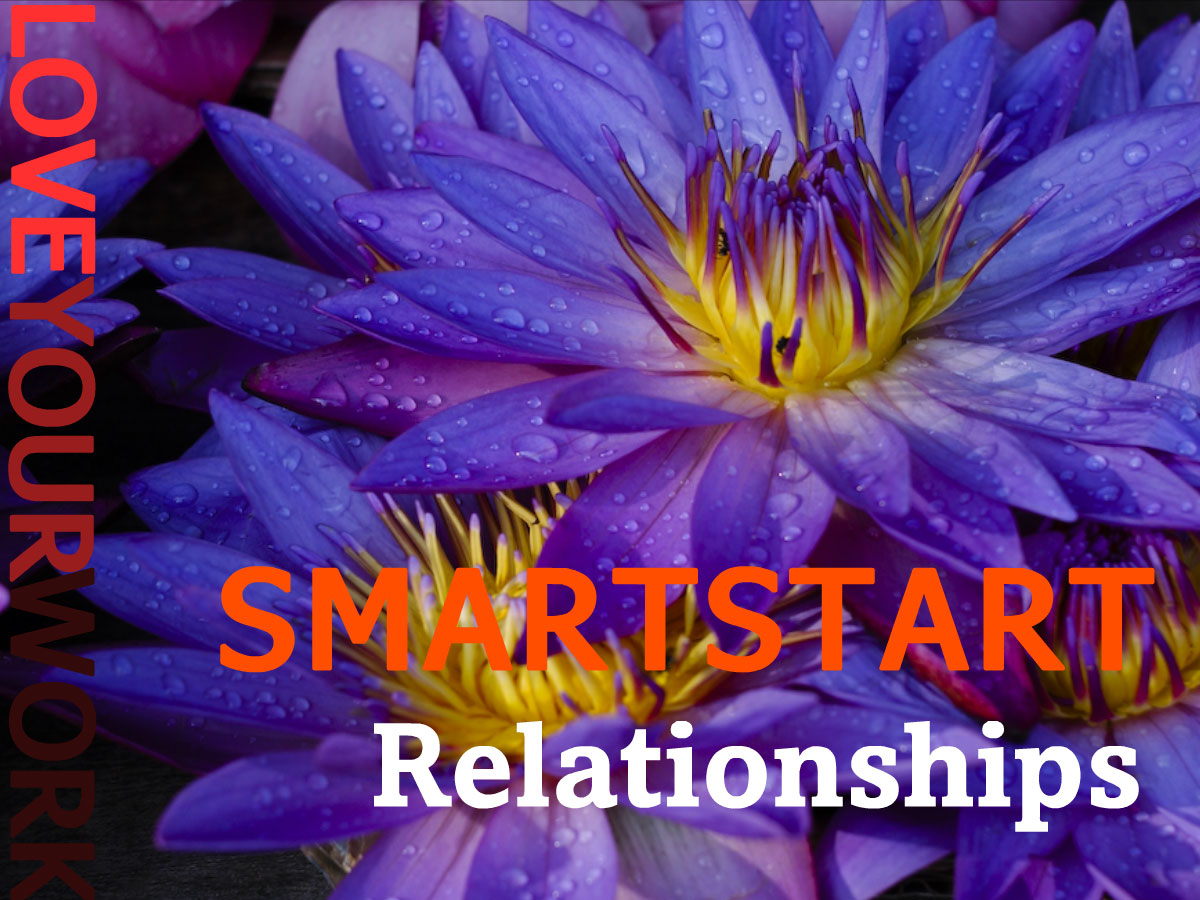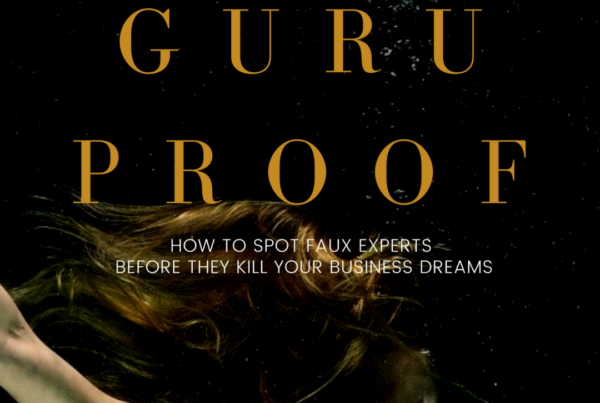
Getting caught isn’t what makes something wrong.
A guest post by Wally Tomaszek
If you stay in business long enough, the day will come when you must confront the harsh reality of employee betrayal. You won’t want to believe it’s true, but the facts speak for themselves: a former employee or contractor you once trusted is stealing clients using your hard work and creative ideas by passing them off as his or her own.
Having former employees set up a new business that competes directly with yours isn’t new. In reality, your company is currently employing people who could, at any time, walk out the door with valuable company assets and severely hinder your business. Technology makes it all too easy and professional integrity isn’t what it used to be.
Now that this has happened, feelings of anger, frustration, and a sense of loss and betrayal can be overwhelming. And for some, extreme rage festers and is directed toward seeking revenge. Revenge might taste sweet in the moment but, ultimately, it’s bad for business.
So what can you do instead? Can you protect yourself from employees who steal from you? Can you prevent it from happening again? Should you take your chances in court or let it go?
7 Lessons Learned the Hard Way
Here are some hard lessons I’ve learned in dealing with this very challenge over the years:
1. Prevention is less costly than prosecution.
Don’t go into business thinking employee theft will never happen to you. If it doesn’t, great. But if you expect that it could happen, you can put plans in place to help make it much less likely.
For example, you can formally register copyright for all critical intellectual property. You can take additional precautions to protect your digital images from theft by using watermarks, blocking copying ability with a no-right-click script, shrink-wrapping the images, or using Flash to interfere with image copying. (Get details on how to protect images from being copied here.)
And, when employees leave your company, whether by their choice or yours, consider the possibility they will be starting up a new business to compete directly with your own. Stay alert to such occurrences and, when they come to your attention, investigate further to ensure their success is not coming at the expense of yours. Honest competition should be welcomed; dishonest representation must be dealt with immediately and stopped.
2. Hire slow; fire fast.
Have a system in place for vetting the trustworthiness of anyone you hire, including referrals. Talk to shops, agencies and others who’ve worked with them. Check out their online presence and reputation as part of your due diligence.
Make it clear when interviewing that breaking your trust is grounds for immediate dismissal and that hiring is contingent on signing a non-solicitation agreement with a non-compete clause. Enforce these rules for all. No exceptions.
3. Limit exposure to clients, customers and confidential data.
Professional service companies are relationship-based businesses. And those relationships are built by the employees and contractors working directly with your clients and customers.
As the business owner, it may not be feasible for you to be the only point of contact but you can still limit direct exposure to clients and customers your new employees and contractors have by pairing them with other employees until full trust has been earned.
Additionally, when it comes to client contact details and other confidential data, it might mean you need to compartmentalize information, restrict access to certain files such as lead lists and proprietary processes, ensure communications and networks are secured, and have employees sign non-disclosure agreements.
4. Put contracts in place for both employees and contractors.
Use contracts to clearly establish how people representing your company are to act when on a job for you and spell out any actions that are prohibited.
For example, have all your employees sign non-solicitation agreements that include a non-compete clause. Give contractors cards for your business to pass out when they’re on a job for you and put in writing they are not to be passing out their own business cards, or talking about their businesses, when working on a job representing you.
5. Distribute key responsibilities among employees.
As convenient as it might be to rely on a single superstar employee for running operations, your business can be drastically affected if you ever have to fire that person. Make sure you keep a hand on key projects and that you grow a team where you can distribute the workload and responsibilities.
6. Grow your project pipeline.
Set up your business to continue to evolve in such a way that it won’t collapse completely if someone steals your clients and creative ideas. Having new projects and clients always coming on board is a way of continuing to move forward when forced to deal with the inevitable.
7. Reward trustworthy behaviour.
Create an environment where loyal employees are recognized and rewarded for trustworthy actions so they’ll have a greater incentive to not leave you. While extra money is always nice, research proves the most highly motivating rewards are related to having greater autonomy and personal accountability.
When Employees Steal From You
You can do everything right and yet, one day, be faced with employees who steal from you. Sometimes, though not always, it becomes necessary to take them to court. If you’ve already taken the precautions discussed previously, you will be steps ahead in terms of preparing your cause for action. But, there is still a lot of work ahead for you. Even as you try to resolve matters on your own.
First, you’ll need to gather the evidence your former employees are passing off your work (e.g., content on your website, images, products etc.) as their own in starting up their new business. The internet makes this quite easy to do since so many new businesses market themselves online.
If you confirm this is happening, you’ll want to issue a cease-and-desist letter to the offending parties using either your own letterhead or by hiring a lawyer to do so on your behalf. While a letter from a lawyer might be taken more seriously, you can anticipate the offender(s) will either ignore these letters or respond by denying your accusations of theft and misrepresentation.
These denials often continue even when you get the police involved by reporting the theft. However, you can expect your case might only remain open pending proof of criminal acts. Data theft is a relatively new area of law and, generally, it is not considered a criminal offense unless physical objects such as your computers and hard drives have been taken and there are witnesses who can attest to this. For this reason, it is more likely it will be up to you to prove and put an end to copyright violations.
In Canada, copyright is governed by The Copyright Act. However, the Digital Millennium Copyright Act (DMCA), is another weapon you can use in this regard.
For example, if you’ve sent multiple cease-and-desist requests that are being ignored, you can also defend your copyright by issuing a DMCA notification. The company, DMCA.com, offers several services, including a cost-effective take-down service, you can purchase when someone is using your images or other content online without your permission.
DMCA.com also provides free badges you can put on your website to help deter unauthorized use of your content and images and they can threaten legal action on your behalf which is usually effective in getting offenders to take down your stolen content right away.
Violation of employment agreements aside, knowing your former employees started a new business representing your work as their own is one thing; proving it in court is quite another.
What It Takes To Win a Lawsuit
Lawsuits are costly and require a lot of time, energy and money to prepare. It’s a slow process. Even more costly if you lose. There’s more at stake than meets the eye.
To put things into perspective, we had a recent case involving copyright infringement, violation of passing off laws, and breach of non-solicitation agreements that took over a year just to be heard. Substantiating the claim required hiring two technical experts to serve as witnesses, one of which was a respected Computer Forensic Data Expert needed to analyse 20 (of 250) digital images stolen from our servers and posted on the defendant’s website as their own work under the name of the new company they had formed. Significant scientific data had to be obtained to present as evidence to prove the images were copied without consent and used illegally.
Corporate records had to be searched to locate corresponding invoices for the jobs represented in the images. Four of our employees had to take time off work (with pay) to give testimony as witnesses to the work involved in the relevant projects to confirm true ownership of the images in question.
Customer testimonials had to be compiled and presented further tying the images posted by the defendants on their website as their own work to, in fact, be our own intellectual property. Copies of letters of solicitation, addressed to our customers in contravention of signed non-solicitation agreements, had to be presented to prove breach of these agreements.
To make the case for copyright infringement penalties, our lawyer had to find and prepare four case law examples showing past rulings and awards from similar cases. (The penalties showed a cost per image used.)
And none of this remotely captures the stress imposed on us to defend ownership of the materials in question and incur unplanned expenses to prepare the evidence.
At the end of it all, the case was won on the strength of the evidence presented and judgement was awarded to the maximum allowable in Ontario, $25,000, plus costs of $10,000. However, be forewarned — winning a judgement is one thing; collecting on it is another!
Hence the next chapter — registering the judgement, after which it will go to the sheriff’s office for enforcement. It remains unknown as to whether or not the judgement can be fully collected or if the former employees’ new business will survive. We can only hope lessons have been learned. Particularly that there is no shortcut to success; hard, honest work and a commitment to excellence is always the best way to get there.
BIO: Wally Tomaszek owns Sign-a-Rama (Toronto), a premier sign and display company offering comprehensive in-house signage services including design, manufacturing and installation since 1986. Contact him here to learn more about how the right signage can boost your business by speaking directly to your target market.
More next time. Until then, remember to LOVE YOUR WORK, whatever it may be.
PS Did Wally’s post speak to you? If so, please feel free to share it with your own communities, friends and followers. Thanks for sharing the love! ♥♥♥



